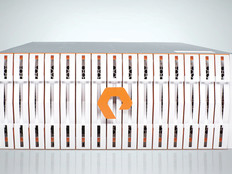What Cloud Computing in Admissions Means for Analytics, ROI and IT
In part two of our four-part series on how cloud computing is changing the admissions process in higher education, we looked at the applicant and how tech-savvy students are driving significant changes in the way colleges and universities provide service. In this segment, we will look at the use of comparative data to shape enrollment, the return on investment (ROI) generated by a cloud-based implementation, and benefits to admissions departments and IT organizations.
Competition for the best and brightest students is fierce, putting considerable demand on college IT departments for faster, more efficient systems and better data. In today’s admissions environment, large comparative data sets are the cornerstone of enrollment management, which is the art and science of delivering an incoming class that meets institutional goals.
The need for comparative analytics is a powerful example of how cloud computing can provide exceptional results with positive side effects across campus. A robust enrollment strategy requires weekly — and sometimes daily, hourly or even more frequent — data capture to serve as benchmarks for future cycles. Designing, developing and deploying these data sets can significantly impact other IT priorities.
In the past, the pressing needs of enrollment management have spawned extensive, on-campus data warehousing efforts. Projects of this nature can be costly in terms of time, resources and institutional focus. Many IT shops have found themselves overwhelmed by data definition activities — as well as designing and coding extracts — only to be pilloried for cost overruns and delay. Today, the cloud is changing the approach to admissions data.
Pinning Down Cloud’s ROI
An enrollment effort can rarely wait for a full-blown warehousing strategy to evolve. Many of the details that drive marketing efforts have critical value within the cycle but diminish in importance over time. It can make sense to keep day-to-day admissions data separate from the warehouse, if one exists. Mission-critical drivers and outcomes can then be stored at key census dates. The result is more-focused, useful information that links with retention and academic markers to validate the enrollment strategy.
Even with all of these advantages, a successful enrollment effort must be attained within the constraints of sound fiscal management. It should come as no surprise that when the subject of cloud computing comes up, most chief financial officers are concerned with affordability and ROI.
In the case of admissions — a substantial cost center and revenue generator — ROI has many dimensions. One large university went from 40 temporary workers to zero after implementing cloud technology and eliminating paper records. Plus, this reduction in labor costs was carried out while improving and focusing communications. It’s a great example of an immediate ROI, significant in both the short and long term.
Intangible benefits, like value perception, are subtle contributors to ROI. Some colleges have reported an increase in staff retention, with employees who describe their jobs as more enjoyable, more manageable, and more satisfying in that they are now more available to students instead of pushing paper. The ability to access data from any location has had a positive impact on work/life balance during peak recruitment periods. Improved attitudes make for enthusiastic admissions representatives on the road as well as better-informed and empathetic staff on campus.
When it comes to data integrity and standardization, a rapid, cloud-based implementation can be the perfect solution. Starting at the front end with admissions, users can be engaged to revisit data capture, definitions, consistency and flow, which will improve quality downstream in systems such as course registration, residential life and finance. In such cases, IT can assume the role of information architect, focusing on integrating the cloud-based front end while revamping standards and improving data integrity across the institution.
Enrollment and retention analyses require consistency and comparability — and these require consensus. Although a core component of institutional analytics, consensus is difficult to achieve without the catalyst of a project with clear objectives and, most important, a short timeline.
In many IT shops, the tyranny of the immediate takes a toll on momentum. IT leaders usually have an unparalleled view of the timing, interconnectedness and vulnerability of business processes. They know what should happen to move the organization forward, yet are often constrained from making it happen. What’s more, they are often blamed when outcomes don’t live up to expectations.
Few IT shops in higher education have technical or financial resources sufficient to meet the everyday needs of students, faculty and staff while orchestrating the heavy lift of traditional enterprise resource planning implementations. A cloud approach changes all this: The organization gets heightened data security, access to state-of-the-art technology, lower cost options for comparative reporting, increased customer satisfaction, the opportunity to repurpose and retain talented staff, and a significant ROI.









